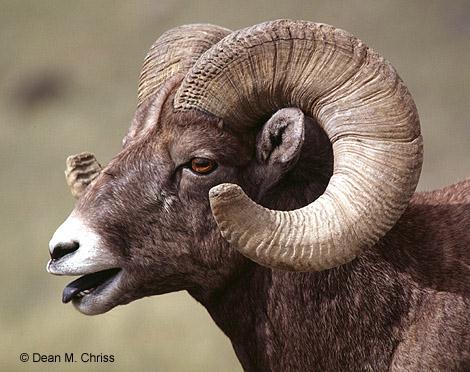
| Home | Daisy Page | Brownie Page | Junior Page | We would love to have you sign our GuestBook! | Home | Daisy Page | Brownie Page | Junior Page |
Welcome to the Thompson Falls Special Animals Page!![]()
| Cadette & Senior Page | Privacy Policy Page | Webrings & Links |
| Special Animals | Service Unit Roster | Online Safety Pledge |![]()
There are some really great and very rare and special animals around our area. We have Bald Eagles, Mountain Lions, Elk, Whitetail Deer, Mule Deer, Golden Eagles and more critters running around here then you can shake a stick at! Living in the mountians has it's benefits! But we wanted to share what we thought were some of the rarest animals a girl might see. The best part is they are all right here in Thompson Falls!!!!
So please enjoy our animal page and let us know what you think!![]()
Rocky Mountain Big Horn Sheep
Species name: Ovis Canadensis
A quick question about the obvious: how did bighorn sheep get their name? That's right, because they have big horns. In fact, the males (known as rams) are known for their massive curled horn--the older the male, the more length, circumference and "curl" the horns will have. During the rut (mating season), the males literally become battering rams; they face off in duels for supremacy by battering their horns together in violent collisions. The thunderous echoes of these duels crackle through high mountain valleys during the rut. Female bighorn sheep (called ewes) also have horns, but the horns aren't nearly as large. And of course, the females see no need to batter themselves silly in duels. Bighorn sheep are right at home in Montana's rugged mountains. Their gray-brown coats help them to blend into the mountainside, but their white rumps stick out like, well, like white rumps.
Bighorn sheep feed on grasses and shrubs in the high mountain ranges, and it is not uncommon to see them grazing in meadows or hanging out on rocky cliffs. They seem to be at home in most any terrain. Of all the big game species, they are among the most social. They band together in herds, although males tend to stay separate from the females and young except during breeding season. Unfortunately, because of their high mountain habitat, they suffer from the effects of harsh winter weather where only the heartiest survive.
Surprisingly, one of the best viewing sites is also one of the easiest to find. The aptly-named Kookoosint Sheep Viewing Area is located on Highway 200 just outside of Thompson Falls, and the best time of the year for watching is between October and May. At any given time, you may see some 70 sheep roaming this area.
We would like to send a very big THANK YOU to Mr. Dean M. Chriss. He took this photo and when Ani (our webmistress) asked for any photos he may have of Big Horn Sheep he emailed us permission to use this one! Thanks You Mr Chriss!!!! ![]()
Mountain Goats
Species name: Oreamnos americanus
Mountain goats are right at home in the largest high-rises in Montana: large mountain cliffs. And if you think Sir Edmund Hilary was a great mountain climber, wait until you watch a couple mountain goats efforlessly scale a few sheer farces. They're known for their luck and agility while navigating steep, rocky terrain; in this harsh habitat, it's what gives them an advantage over their predators. And while it may look like the only thing to eat on these cliffs is rocks, don't be fooled; mountain goats eat the lichen and tiny clumps of grass that grow between the rocks.
The biggest distinction between males (known as billies, as in "The Three Billy Goats Gruff") and females (known as nannies, as in "Nanny goat, nanny goat") is...um...well, there isn't a big distinction. Both have horns, and it's difficult to tell them apart from a distance. Generally, the males are larger and hang out alone, while the nannies and the younger goats form small herds. Baby mountain goats, or kids, are born right on the steep rocks and learn to climb right away. (That's somewhat of a necessity when you're born on rocks.)
Mountain goats' hooves have hard outer edges with soft centers that help them keep their footing, so they seldom fall. However, their harsh environment does take its toll; mountain goats don't usually live as long as other big game species. Why? Scraping lichens off rocks eventually wears out their teeth, which leads to starvation. But they are slowly growing in population once again.![]()


![]()
So now you know about two of the really neat rare animals that live near us! We hope that all of you visiting have learned a little more about these animals and see why we were so excited to share them with you! We would love to hear from you as to what you though about our animal friends here. 
Our Webmistress Ani, will be checking our email regularly for us! We would love to hear from other Troops from around the country, so please say hello and we will reply if we can.![]()
| Cadette & Senior Page | Privacy Policy Page | Webrings & Links |
| Special Animals | Service Unit Roster | Online Safety Pledge |![]()
We would like to thank Marie for the wonderful graphics!!
![]()
" 'GIRL SCOUT®' and other GIRL SCOUT Trademarks are registered trademarks of Girl Scouts of the USA® and are herein pursuant to license."
This website is not officially endorsed, sponsored or in anyway affiliated with
"The GIRL SCOUTS of the USA"®
C.O.P.P.A. Disclosure and Privacy Policy of the Thompson Falls Girl Scout Website.